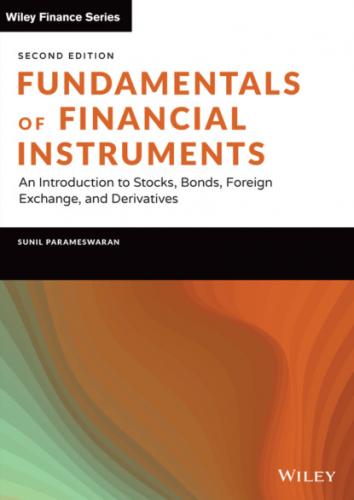Therefore
This is the Fisher equation. R or the return on the financial bond is the nominal rate of return, while r or the rate of return on the goods bond is the real rate of return. Thus, the relationship is that one plus the nominal interest rate is equal to the product of one plus the real interest rate and one plus the rate of inflation. If the real rate of interest and the rate of inflation are fairly small, then the product
This is called the approximate Fisher relationship.
In Example 2.1, the nominal rate of return was 10% while the rate of inflation was 25%. Thus, the real rate was
SIMPLE INTEREST & COMPOUND INTEREST
Before analyzing interest computation techniques, let us first define certain key terms.
Measurement Period: The unit in which time is measured for the purpose of stating the rate of interest is called the measurement period. The most common measurement period is one year, and we will use a year as the unit of measurement unless otherwise specified. That is, we will typically state that the interest rate is x%, say 10%, where the implication is that the rate of interest is 10% per annum.
Interest Conversion Period: The unit of time over which interest is paid once and is reinvested to earn additional interest is referred to as the interest conversion period. The interest conversion period will typically be less than or equal to the measurement period. For instance, the measurement period may be a year, whereas the interest conversion period may be three months. Thus, interest is compounded every quarter in this case.
Nominal Rate of Interest: The quoted rate of interest per measurement period is called the nominal rate of interest. For instance, in Example 2.1 the nominal rate of interest is 10%.
Effective Rate of Interest: The effective rate may be defined as the interest that a dollar invested at the beginning of a measurement period would have earned by the end of the period. Quite obviously the effective rate will be equal to the quoted or nominal rate if the length of the interest conversion period is the same as that of the measurement period, which means that interest is compounded only once per measurement period. However, if the interest conversion period is shorter than the measurement period – or in other words, if interest is compounded more than once per measurement period – then the effective rate will exceed the nominal rate of interest. Take the case where the nominal rate is 10% per annum. If interest is compounded only once per annum, an initial investment of $1 will yield $1.10 at the end of the year, and we would say that the effective rate of interest is 10% per annum. However, if the nominal rate is 10% per annum, but interest is credited every quarter, then the terminal value of an investment of one dollar will definitely be more than $1.10. The relationship between the effective rate and the nominal rate will be derived subsequently. It must be remembered that the term nominal rate of interest is being used in a different context than in the earlier discussion where it was used in the context of the real rate of interest. The potential for confusion is understandable yet unavoidable.
Variables and Corresponding Symbols
P ≡ amount of principal that is invested at the outset
N ≡ number of measurement periods for which the investment is being made
r ≡ nominal rate of interest per measurement period
i ≡ effective rate of interest per measurement period
m ≡ number of interest conversion periods per measurement period
Simple Interest
Take the case of an investor who makes an investment of $P for N periods. If interest is paid on a simple basis, then we can state the following.
The interest that will be earned every period is a constant.
In every period interest is computed and credited only on the original principal.
No interest is payable on any interest that has been accumulated at an intermediate stage.
Let r be the quoted rate of interest per measurement period. Consider an investment of $P. It will grow to $P(1 + r) after one period. In the second period, if simple interest is being paid, then interest will be paid only on P and not on P(1 + r). Consequently, the accumulated value after two periods will be $P(1 + 2r). In general, if the investment is made for N periods, the terminal value of the original investment will be $P(1 + rN). N need not be an integer, that is, investments may be made for fractional periods.
Katherine Mitchell has deposited $25,000 with Continental Bank for a period of four years. The bank pays interest at the rate of 8% per annum on a simple basis.
The growth of Katherine's deposit may be viewed as follows. An investment of $25,000 will become
after one year. Thus, the interest for the year is $2,000. At the end of the second year, interest for the year will be paid only on the original principal of $25,000, and not on the previous year's terminal value of $27,000. Consequently, the accumulated value after two years will be
Extending the logic, the terminal balance after three years will be $31,000, and the final balance after four years will be $33,000.
Notice the following.
The interest paid every year is a constant amount of $2,000.
Every year interest is paid only on the original deposit of $25,000.
No interest is paid on interest that is accumulated at an earlier stage.
